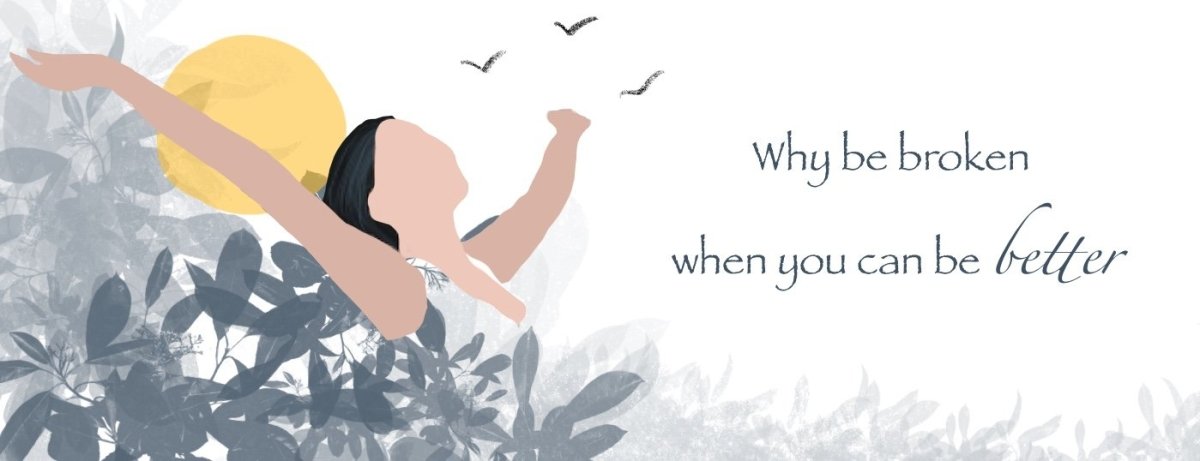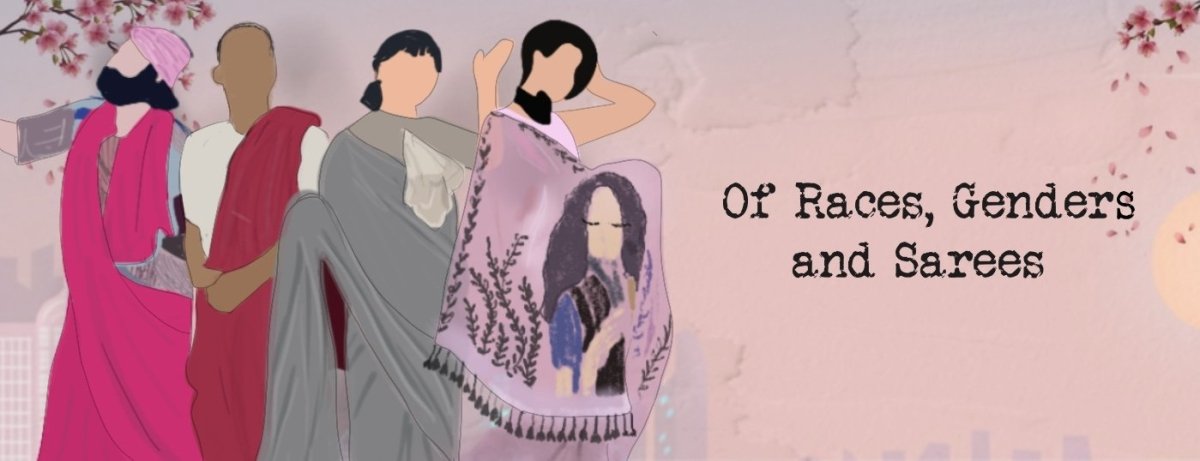
Why be broken when you can be better
“Why be broken when you can be better?” – my grandmother stood by the door when she caught me sobbing in my room. No words needed to be exchanged between us for her to understand that her precious girl had come home heartbroken that night. Unlike everyone else, she neither cared to console me nor did she try to cheer me up. With her usual poised demeanor she walked in, carrying her favorite bedside-table vase that fell and broke that morning. She held the pieces together and laid them over my bed. I gently wiped the tears off my face and went to get my glue and paint. Together, without another word from either side, we were taciturn as we fixed the object. It wasn’t just another possession, mind you – my grandfather had brought it from one of his travels across the country especially for his beloved wife and she kept it next to her since then. It bore witness to the history of the place it came from, to the beauty of their relationship and everything they had been through. Today, we celebrated all that and more by putting the pieces back together… instead of making the cracks invisible, we made them more beautiful and meaningful than ever. My heartbreak not only saved it from getting ruined, but contributed another story to its existence. Flawed and broken we might be, but we can always embrace our cracks and rebuild ourselves from where we are. Fortunately it wasn’t just the vase that was saved that night, we had also taken my broken heart and transformed it into art! :)
Kintsugi — a metaphor for embracing your flaws and imperfections — is easier said than done. The strength does not dawn upon anyone overnight. It takes work and awareness in order for it to truly be healing. The 400+ year old Japanese art is essentially a pottery repair method that honors the artifact's unique history by emphasizing, not hiding, the break.
According to art historians, kintsugi came about accidentally (well, it does fit). When the 15th-century shogun Ashikaga Yoshimasa broke his favorite tea bowl, he sent it to China for repairs and was disappointed that it came back stapled together. The metal pins were unsightly, so local craftsmen came up with a solution — they filled the crack with a golden lacquer, making the bowl more unique and valuable. This repair elevated the fallen bowl back to its place as shogun’s favorite and prompted a whole new art form — in the process of transforming the artifact into something new, making it more rare, beautiful, and storied than the original.
How do we, as humans, relate to this art? Sure, we don’t expect people to be perfect. We may in fact appreciate when people expose their vulnerabilities & insecurities, show old wounds or admit their mistakes. In a way this honesty fosters mutual understanding and we look at it positively. But the question still remains – are we ready to fearlessly expose ourselves and admit our own failures? We’re all fallible, we heal and we grow out of our pain, we survive blows to our ego or to our reputation or our health and can live to tell the tale. But while we see other’s experiences abstractly we see our own very concretely. We feel the things that happen to us intimately. Things fall apart, despite all the plans we make. That’s life. Wisely we can use every scrap, patch ourselves up, and keep going. That’s the essence of resourcefulness, resilience, persistence. When we expect everything and everyone to be perfect, including ourselves, we not only discount much of what is beautiful, but we create a cruel world where resources are wasted, people’s positive qualities are overlooked in favor of their flaws, and our standards become impossibly limiting, restrictive, and unhealthy. The kintsugi approach instead makes the most of what already is, highlights the beauty of what we do have, flaws and all, rather than leaving us eternally grasping for more, different, other, better.
While we dwell upon these thoughts, let’s also have a look at our very own version of ‘Kintsugi’ stories in the form of antique ornaments to adorn our flawed, imperfect beauty! Every product in this collection is hand-made and brings together elements of old jewelry curated from all over India and new threads and accents, both bringing out the best of each other. Due to this, ‘imperfections’ are a natural part of every product, as is the case with everything hand-made and/or resurrected. True to the spirit of Kintsugi that inspired this collection, these perceived imperfections add a unique charm to the products! Enough said – it’s time for you to see for yourself: https://suta.in/collections/kintsugi-stories


